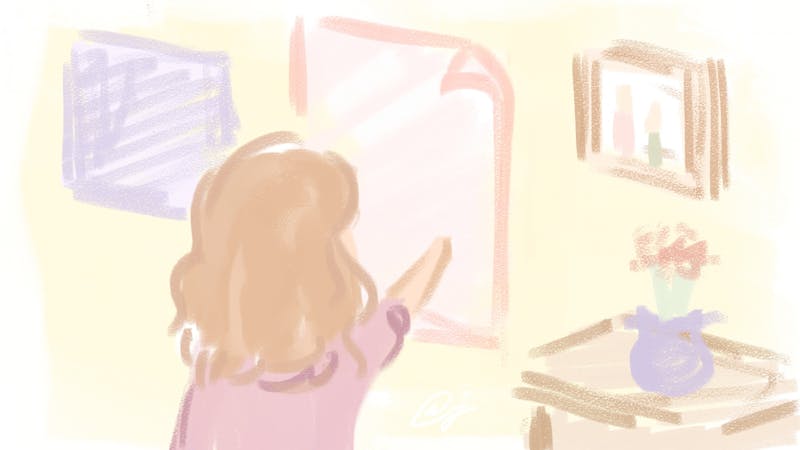Letter from the Editor: 03.15.2022
On redecorating my childhood bedroom, reinventing myself, and unpredictability

At approximately midnight the night before I was supposed to leave for spring break, I decided to rearrange all the furniture in my room. Instead of packing my bags, I pulled out my measuring tape and got to work deciding which new layout would look best.
I learned a lot of things that night: that it’s exceedingly difficult for one person to move a full–size storage bed with drawers full of clothes by themself, that the little window alcove in the far side of my room can function as a nightstand if I build a shelf into it, and that the wooden base of my beloved clothing rack that I built myself will crack and splinter if I hang too much on it.
Most importantly, I was reminded that I have a tendency to crave a change in environment just as I start to get comfortable.
As all irrational habits do, this likely started in my childhood; for most of elementary and middle school, moving to a new house or apartment was a yearly occurrence. I grew accustomed to the rhythm of starting each year in a new place, reinventing myself as I decided how to decorate another bedroom. When we moved for the last time, rearranging furniture supplanted relocating as the method I’d use to simulate a fresh start.
Now, in an apartment I’ve lived in for nine months and have slowly begun to call home, I feel the same staleness that permeated each one I lived in as a child. Only this time, I know it isn’t the space—it’s my own feeling of stagnancy.
Building a space for a version of myself that I want to be and hoping that it’ll propel me there will never work—it’s impossible to predict who I’ll be in a year, let alone force myself to grow in a certain direction. Filling a bookshelf with aspirational reads won’t make me a bookworm, and decorating my room with the right feng shui won’t make me less of an anxious person. Ultimately, we all are shaped by our environments as much as we are by our own aspirations—and there’s no point in trying to predict the unpredictable.
That’s what this week’s issue attempts to tackle. Our feature explores students’ experiences with long COVID, including the many twists and turns of symptoms that remain or evolve past acute infection. We approach season two of Euphoria with a critical eye, questioning what exactly Sam Levinson intended from such an ill–planned plot. Finally, we discuss the evolution of music as a form of protest in Ukraine amid a rollercoaster of geopolitical unrest and conflict.
More Like This
PennConnects
Newsletters
Get 34th Street's newsletter, The Toast, delivered to your inbox every Friday morning.
Newsletters